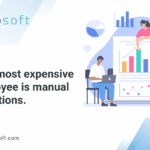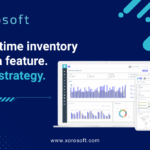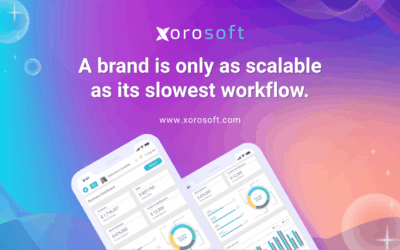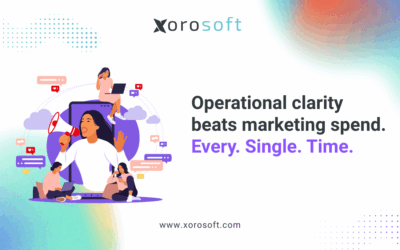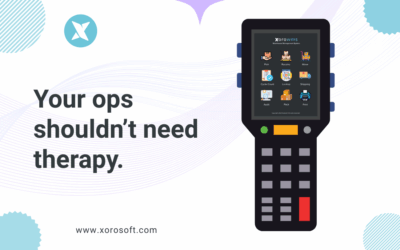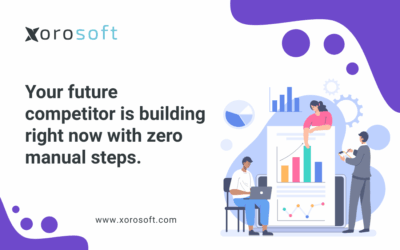
Introduction to ERP systems
Enterprise Resource Planning (ERP) systems have revolutionized the way businesses operate by integrating various business functions into a single, unified platform. These systems streamline processes, enhance collaboration, and provide real-time insights to drive informed decision-making. ERP systems have become a necessity for organizations across industries, enabling them to manage their operations efficiently and effectively.
Understanding the need for real-time analytics in ERP systems
As businesses become increasingly data-driven, the need for real-time analytics in ERP systems has become paramount. Traditional ERP systems often rely on batch processing, where data is processed periodically, leading to delays in accessing critical information. Real-time analytics bridges this gap by providing instant access to up-to-date data, allowing businesses to make timely and informed decisions.
Real-time analytics in ERP systems enables organizations to monitor key performance indicators (KPIs) in real-time, identify trends, and respond promptly to changing market conditions. By leveraging real-time analytics, businesses gain a competitive edge by being able to adapt quickly to market demands, optimize processes, and identify areas for improvement.
Advantages of real-time analytics in ERP systems
Real-time analytics in ERP systems offers a plethora of advantages that can significantly impact business performance. Firstly, real-time analytics enables organizations to gain a comprehensive view of their operations at any given moment. This visibility allows businesses to identify bottlenecks, streamline processes, and allocate resources efficiently.
Additionally, real-time analytics enhances decision-making by providing accurate and timely insights. With up-to-date data, organizations can identify emerging trends, spot anomalies, and make informed decisions to seize opportunities or mitigate risks. Real-time analytics also enables businesses to track performance metrics, such as sales, inventory levels, and customer satisfaction, in real-time, enabling them to take proactive measures to optimize their operations.
Furthermore, real-time analytics in ERP systems empowers employees by providing them with the information they need to perform their tasks efficiently. Instead of relying on historical data or manual processes, employees can access real-time insights to make data-driven decisions, improving productivity and effectiveness.
Case study: How Xorosoft ERP improved efficiency with real-time analytics
Xorosoft ERP, a leading provider of ERP solutions, has witnessed firsthand the transformative impact of real-time analytics on business efficiency. One of their clients, a manufacturing company, was struggling with inventory management and faced frequent stockouts due to inaccurate demand forecasting.
By implementing Xorosoft ERP’s real-time analytics module, the company was able to overcome these challenges. The module provided real-time visibility into inventory levels, demand patterns, and production schedules. Armed with this information, the company could accurately forecast demand, optimize inventory levels, and prevent stockouts.
Not only did the real-time analytics module improve inventory management, but it also enhanced overall operational efficiency. The company could identify production bottlenecks, optimize resource allocation, and streamline workflows. As a result, the company experienced a significant reduction in lead times, improved customer satisfaction, and increased profitability.
Key features of Xorosoft ERP’s real-time analytics module
Xorosoft ERP’s real-time analytics module offers a comprehensive set of features to empower organizations with actionable insights. Firstly, the module provides real-time dashboards that display key metrics and KPIs, allowing users to monitor performance at a glance. These dashboards can be customized to cater to specific roles and responsibilities within the organization.
The module also offers advanced data visualization capabilities, enabling users to analyze data through interactive charts, graphs, and reports. This visual representation simplifies complex data sets, making it easier for users to identify trends, patterns, and anomalies. Additionally, the module includes predictive analytics, allowing businesses to forecast demand, optimize production schedules, and anticipate market trends.
Real-time alerts and notifications are another key feature of Xorosoft ERP’s real-time analytics module. These alerts notify users of any deviations from predefined thresholds, enabling them to take immediate action. For example, if inventory levels fall below a certain threshold, an alert can be triggered, prompting the procurement team to replenish stock.
Integrating real-time analytics with inventory management in ERP systems
One area where real-time analytics has a significant impact is inventory management. Traditionally, inventory management relied on manual processes and periodic stock counts, leading to inaccuracies and stockouts. Real-time analytics revolutionizes inventory management by providing real-time visibility into inventory levels, demand patterns, and supplier performance.
By integrating real-time analytics with inventory management in ERP systems, organizations can accurately forecast demand, optimize inventory levels, and prevent stockouts. Real-time analytics enables businesses to monitor inventory in real-time, track stock movements, and automatically trigger reorder points based on predefined thresholds.
Furthermore, real-time analytics allows organizations to analyze historical demand patterns, identify seasonal fluctuations, and adjust inventory levels accordingly. This proactive approach ensures that businesses have the right amount of stock at the right time, minimizing carrying costs and improving customer satisfaction.
The impact of real-time analytics on accounting in ERP systems
Real-time analytics also has a profound impact on accounting processes within ERP systems. Traditionally, accountants had to rely on manual data entry and batch processing, leading to delays and errors. Real-time analytics streamlines accounting processes by automating data collection, validation, and analysis.
With real-time analytics, accountants can instantly access financial data, track expenses, and monitor cash flow in real-time. This real-time visibility enables accountants to identify discrepancies, detect fraud, and make informed financial decisions.
Additionally, real-time analytics enhances financial reporting by providing up-to-date insights into financial performance. Accountants can generate real-time financial statements, such as balance sheets, income statements, and cash flow statements, with a click of a button. This eliminates the need for manual data consolidation and ensures that financial reports are always accurate and timely.
Choosing the right ERP solution with real-time analytics capabilities
When selecting an ERP solution, it is crucial to consider the availability and capabilities of real-time analytics. Not all ERP systems offer robust real-time analytics modules, so it is important to evaluate the features and functionality that align with your organization’s needs.
Consider the specific requirements of your business, such as the need for real-time dashboards, advanced data visualization, or predictive analytics. Assess the scalability and flexibility of the ERP solution to ensure that it can accommodate your organization’s growth and evolving analytical needs.
It is also essential to evaluate the integration capabilities of the ERP solution with other systems and data sources. Real-time analytics relies on accurate and timely data from various sources, so seamless integration is critical to ensure the integrity of the analytics.
Implementing real-time analytics in existing ERP systems
For organizations that already have an ERP system in place but lack real-time analytics capabilities, implementing real-time analytics can be a game-changer. The first step is to assess the current state of data management within the ERP system. Identify the data sources, data quality, and data governance processes to ensure that the foundation for real-time analytics is strong.
Next, evaluate the available options for real-time analytics modules or third-party integrations that can enhance the existing ERP system. Consider the scalability, ease of implementation, and compatibility with the current ERP solution. Engage with ERP vendors or consultants to guide you through the implementation process and ensure a seamless integration.
Once the real-time analytics module is implemented, it is crucial to provide adequate training and support to users. Real-time analytics is only effective if users can leverage the insights to make informed decisions. Invest in training programs and workshops to enable users to maximize the benefits of real-time analytics.
Conclusion: The future of real-time analytics in ERP systems
Real-time analytics has become a crucial component of modern ERP systems, enabling organizations to gain real-time insights, enhance decision-making, and improve operational efficiency. The advantages of real-time analytics, such as increased visibility, accurate forecasting, and proactive decision-making, have a profound impact on business performance.
Xorosoft ERP, with its robust real-time analytics module, is at the forefront of empowering organizations with actionable insights. By leveraging the power of real-time analytics, businesses can optimize inventory management, streamline accounting processes, and drive overall efficiency and performance.
As organizations continue to embrace data-driven decision-making, the future of real-time analytics in ERP systems looks promising. With advancements in technology and the increasing availability of real-time data, organizations can expect even greater benefits from real-time analytics in the years to come.
To experience the advantages of real-time analytics in ERP systems firsthand, book a demo with Xorosoft today and embark on a journey towards enhanced efficiency and performance.
